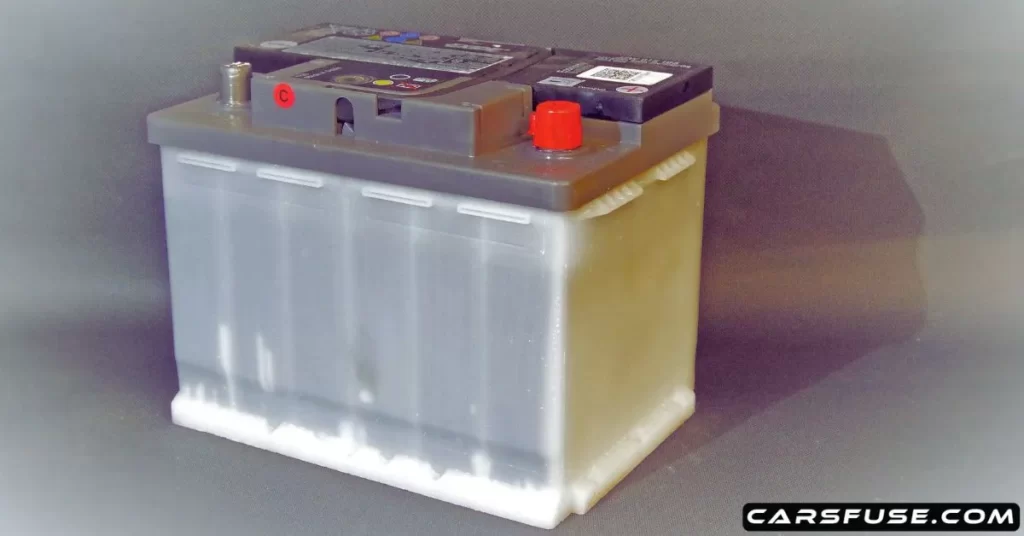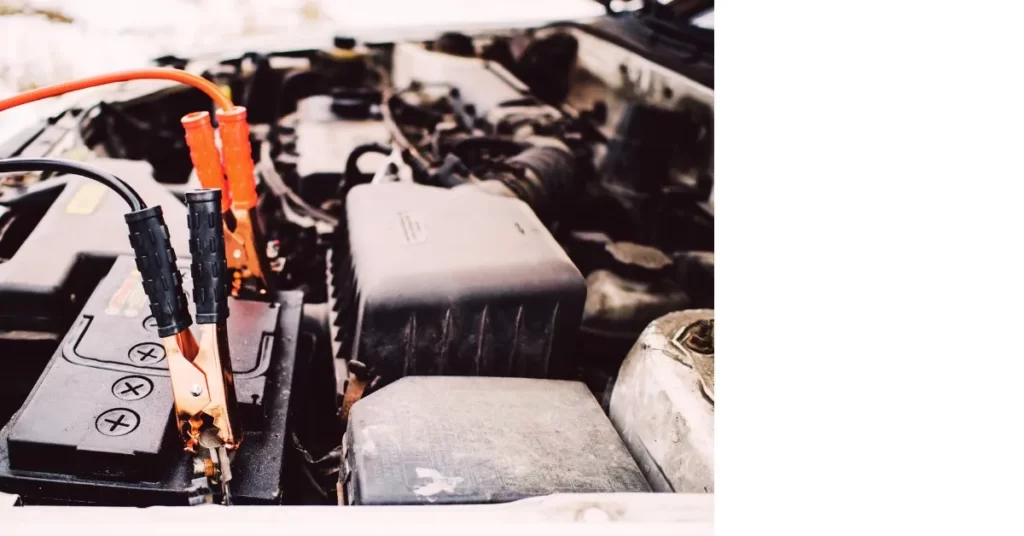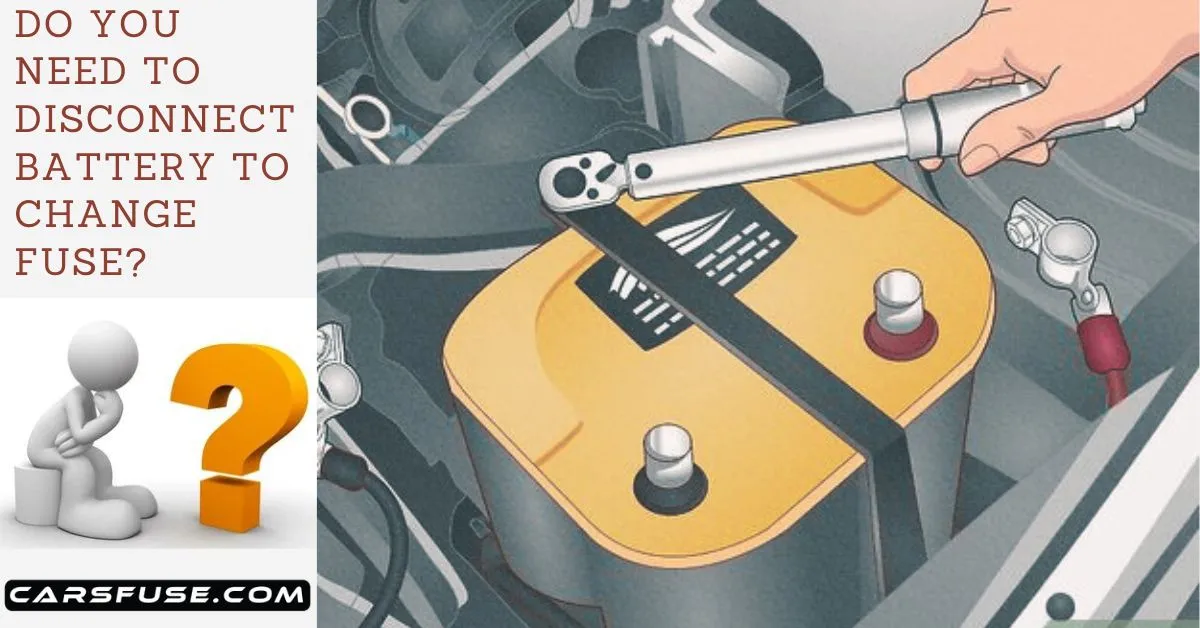This comprehensive article, by answering the important question of whether or not you need to disconnect the battery when changing a car fuse. We will examine the advantages and disadvantages of disconnecting the battery, providing you with a balanced view of the topic. By carefully following the instructions and adhering to the precautions outlined, you can confidently navigate the process, ensuring both your safety and the successful replacement of the fuse.
Table of Contents
When it comes to maintaining and troubleshooting your car’s electrical system, understanding how to change a fuse is a crucial skill. Fuses serve as protective devices, preventing excessive current from damaging sensitive components. However, when a fuse blows, it needs to be replaced to restore the proper functioning of the affected electrical circuit.

Can I pull out the fuse with a battery connected?
In some cases, you may not need to disconnect the battery when changing a car fuse. Fuses associated with low-current circuits, such as interior lights or cigarette lighter, usually pose a lower risk, and disconnecting the battery may not be required. If you follow proper safety precautions, such as wearing insulated gloves and avoiding contact with metal surfaces, you can change certain fuses without disconnecting the battery. Experienced individuals who are well-versed in car electrical systems and have a good understanding of safety measures may choose to skip disconnecting the battery, depending on the specific situation.
If you have determined that disconnecting the battery is not necessary for the specific fuse you are changing, follow these steps to safely replace the fuse:
- Find a safe location to park your car and ensure the engine is turned off. This will prevent any potential electrical surges or accidents while working on the fuse.
- The fuse box is usually located under the dashboard on the driver’s side or in the engine compartment. Consult your car’s manual if you are unsure about the exact location.
- Use the diagram on the fuse box cover or your car’s manual to identify the fuse associated with the malfunctioning circuit. Make sure to confirm the correct fuse by comparing its number or label with the diagram.
- Using a fuse puller or a pair of needle-nose pliers, grasp the faulty fuse and gently pull it straight out. Be careful not to twist or damage the fuse or its terminals.
- Take a new fuse of the same rating and carefully insert it into the vacant slot in the fuse box. Ensure that it fits snugly and is aligned with the terminals.
- Turn on the ignition and test the circuit or device associated with the fuse you replaced. If the problem is resolved and the circuit is functioning correctly, you have successfully replaced the fuse.
While changing a fuse without disconnecting the battery can be done safely, it is important to take the following precautions:
- To minimize the risk of electrical shock, avoid touching any metal surfaces in the fuse box or surrounding area while working on the fuse.
- Utilize insulated tools, such as fuse pullers or needle-nose pliers with insulated handles, to handle the fuse. This helps prevent accidental electrical contact.
- Keep in mind that other fuses or circuits in the fuse box may still be active. Handle the fuse you are replacing carefully, being mindful of potential electrical connections.
- Ensure that you have identified the correct fuse by cross-referencing it with the diagram on the fuse box cover or your car’s manual. Replacing the wrong fuse can lead to further issues.

Should you disconnect the battery when changing the fuse?
When the battery is disconnected before doing any electrical work eliminates the risk of accidental electrical shock while working on the fuse box. If you are working on a fuse related to a high-current circuit, such as the main fuse or a fuse associated with the alternator, it is advisable to disconnect the battery to avoid potential hazards.
You will need to reconfigure settings after reconnecting the battery and reset certain electronic settings, such as the clock, radio presets, or security system codes. Also, disconnecting and reconnecting the battery adds an extra step to the process, increasing the overall time required to change the fuse.
If you are unsure which fuse is causing the problem and need to check multiple fuses, disconnecting the battery can prevent accidental short circuits during the process. It is important to assess the situation and consider the risks involved before deciding whether or not to disconnect the battery when changing a car fuse. Prioritizing safety should be the guiding principle in your decision-making process.
The below guide can be taken if you have evaluated the circumstance and concluded that disconnecting the battery is actually required or if you personally wish to do so for an additional measure of safety.
- To begin, locate the car’s battery and determine which terminal corresponds to the negative (-) side. Using either a wrench or pliers, loosen and remove the cable that is connected to the negative terminal. Ensure that you position the cable in a way that prevents any accidental contact with the terminal.
- Use the diagram found on the fuse box cover or in your car’s manual to identify the specific fuse associated with the malfunctioning circuit. Confirm that you have the correct fuse by comparing its number or label with the information provided in the diagram.
- Using a fuse puller or a pair of needle-nose pliers, carefully grip the faulty fuse and gently pull it out in a straight motion. Be cautious not to twist or cause any damage to the fuse itself or its terminals.
- Now, take a new fuse with the same rating as the previous one and proceed to insert it into the empty slot within the fuse box. Ensure that the new fuse fits securely and aligns properly with the terminals.
- Reattach the cable to the negative terminal of the battery. Make sure to tighten the connection securely, ensuring proper electrical contact.
- With the new fuse in place and the battery reconnected, turn on the car’s ignition. Test the circuit or device that was previously experiencing issues. If the problem is resolved and the circuit functions correctly, you have successfully completed the fuse replacement.
When disconnecting the battery to change a fuse, keep the following precautions in mind:
- Always disconnect the cable connected to the negative (-) side of the battery. This reduces the risk of accidental short circuits and electrical shock.
- While the battery is disconnected, be cautious not to touch any metal surfaces in the vicinity, as a residual charge may still be present in the electrical system.
- When reconnecting the battery, ensure that the cable is securely tightened to maintain a proper electrical connection.
- If the battery terminals are dirty or corroded, clean them using a battery terminal cleaner or a mixture of baking soda and water. This promotes better electrical conductivity.

Are you interested in learning more about troubleshooting car electrical problems? We've got you covered! Our collection of articles is filled with easy-to-understand information and valuable tips about car fuses. We understand that dealing with fuse failures can be quite a common challenge, and to identify the typical reasons behind these failures. It's a great way to gain knowledge and feel more confident when facing fuse-related challenges, simply click the link below which offers practical solutions to help you resolve them effectively. Can I replace a car fuse by myself? How many fuse boxes does a car have? Can you drive your car with a blown fuse? What is the fastest way to check a car fuse? How do I know if my car fuse box is bad or broken? Do you need to disconnect battery to change fuse? How do you check car fuses without removing them?
Conclusion
Whether you choose to disconnect the battery or not, safety should always be a top priority when changing a car fuse. High-current circuits, uncertainty about the fuse condition, and personal safety preferences are factors that may lean toward disconnecting the battery. However, for low-current circuits and when proper precautions are taken, disconnecting the battery may not be necessary.
Ultimately, you should consider the specific situation, your comfort level, and the potential risks involved in making an informed decision. Remember, if you are uncertain or uncomfortable with changing a car fuse, it is always recommended to seek professional assistance from a qualified car mechanic.

